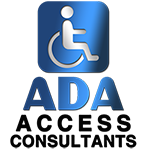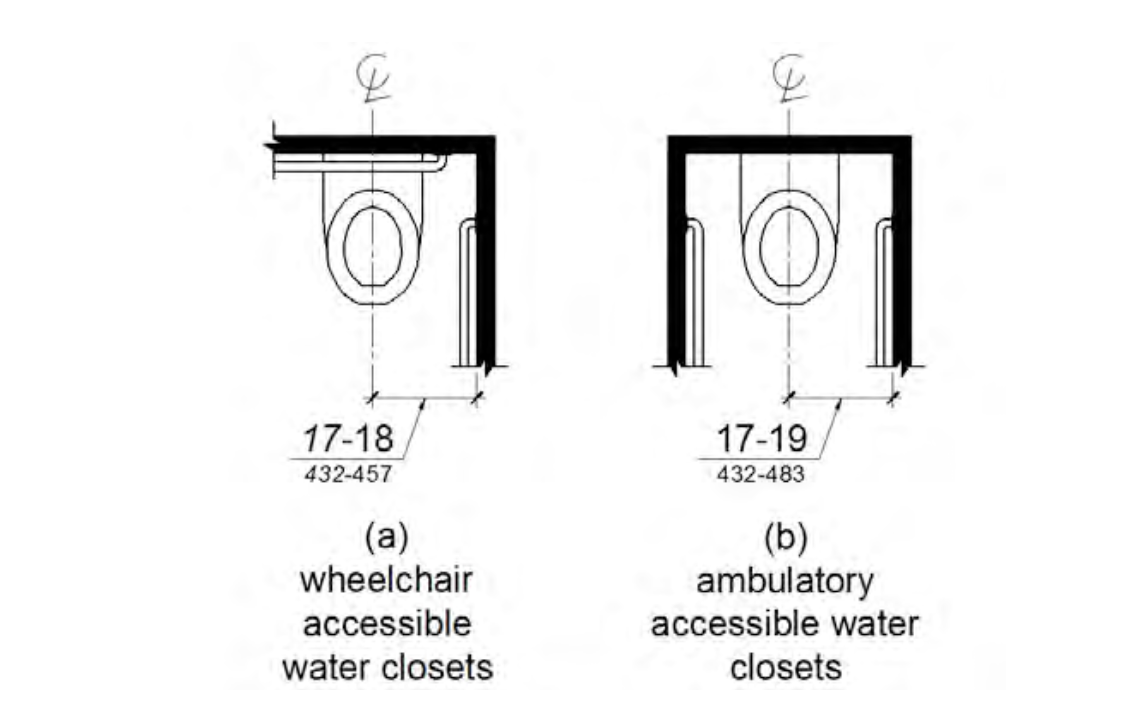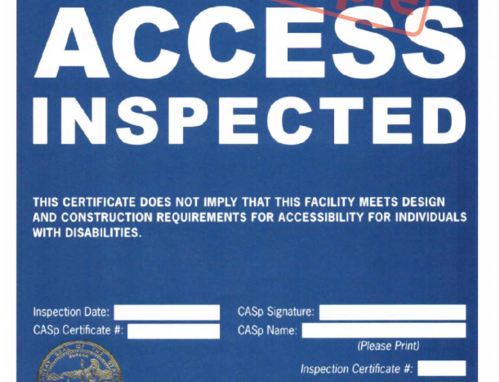ADA Mirror Height What are ADA Mirror Height Requirements? ADA mirror requirements are set forth by the ADA. The ADA… <a class="continue" …
Readily Achievable | ADA law
What is Readily Achievable?
In the context of title III of the ADA, when an element of a property is readily achievable, it means it can be brought up to ADA standard with relative ease. The exact definition used by the ADA is “easily accomplishable and able to be carried out without much difficulty or expense.“
The subjective nature of this has led to much confusion and questions surrounding ADA accessibility. If you are unsure that the changes required for access are readily achievable, we recommend consulting with a CASp or ADA inspector.

What determines readily achievable?
Readily achievable refers to the tasks that can be easily accomplished without significant difficulty or expense. When determining whether an ADA violation meets this criterion, courts focus on various factors that need to be taken into account:
- The nature and cost of the action required.
- The financial resources available at the business, including the number of employees, impact on expenses, safety/construction requirements, such as crime prevention measures, and overall effect on site operation.
- The separation of administrative and fiscal relationship of the site in question to any parent corporation or entity.
- The financial resources of the parent corporation or entity, including its size, number of employees, facilities, and overall financial standings.
- The nature of operations conducted by the parent corporation or entity, including the workforce composition, structure, and functions.
What if ADA repairs are not readily achievable?
If full compliance with the ADA is not readily achievable, alternative measures must be taken to ensure access to the greatest extent possible. For example, if it’s not feasible to create a fully compliant entrance due to steep door maneuvering slopes exceeding 2%, installing a doorbell near the entrance to signal staff of disabled individuals needing assistance may suffice. This approach serves as a temporary solution until full compliance can be attained. It’s important to note that barrier removal under the Readily Achievable provision is an ongoing responsibility. Circumstances may change over time, making barrier removal that was initially deemed unfeasible necessary.
The use of a temporary ramp upon request for individuals in wheelchairs aligns with the concept of not being readily achievable but still trying to fully comply with accessibility standards. In instances where permanent modifications or full compliance may pose challenges due to factors such as cost, time, or physical constraints, offering temporary solutions like portable ramps becomes a practical alternative. By providing this option, businesses and organizations timely address accessibility without incurring significant expenses or modifications. Temporary ramps serve as a feasible measure, ensuring that people with disabilities can access facilities promptly and safely.
Readily Achievable Over Time
Furthermore, the obligation for readily achievable barrier removal is continuous, as stated in III-4.4400. Over time, circumstances may change, necessitating barrier removal that wasn’t initially feasible. However, despite the ongoing obligation, there are limitations. The obligation to remove barriers will never pass the level of access required under the alterations standard (or the new construction standard if ADAAG doesn’t offer specific standards for alterations). This ensures that while the obligation persists, it remains within reasonable bounds and aligned with established accessibility standards.
The Department’s regulation proposes priorities addressing barriers in existing facilities. Recognizing that resources for barrier removal may not be sufficient to address all barriers simultaneously, the regulation offers a method for prioritizing which barriers should be addressed first. The aim of these priorities is to aid in long-term business planning and to address the level of effective access achieved relative to expenses. It’s important to note that these priorities are not required to be followed. Public accommodations have the freedom to use their discretion in determining the most suitable combination of barrier removal measures for their facilities. This approach allows flexibility in addressing accessibility needs while accommodating varying resources available to a business or individual;.

CASP INSPECTION OR ADA Consultation:
Blog:
This guide covers the use and necessity of ADA maps in an accessible property. Using this guide helps businesses reach accessibility. Continue Reading ADA Mat Requirements
ADA parking is an important part of any accessible route. To be accessible, parking stalls require specific width, length, and slope. Continue Reading Certified Access Specialist
ADA regulations encompass many different laws, regulations, and senate bills. All of these explain the legal duty one has to be ADA compliant. Continue Reading ADA Law & Regulations
ADA urinal requirements include various elements of compliance. An ADA accessible urinal can prevent lawsuits and help business reputation. Continue Reading ADA Urinal Requirements
ADA Kitchen Requirements ADA kitchens and Kitchenettes (804 ADA) Understanding ADA kitchen requirements is important in providing an accessible kitchen… <a class="continue" …
ADA Bathroom Requirements allow for an accessible property to all. CASp inspectors at ADA Access Consultants help you get ADA compliant. Protect your self legally... Continue Reading ADA Bathroom Requirements
A CASp inspection is the inspection & reporting on a subject premise. This helps businesses work towards an accessible property. Continue Reading CASp Inspection








